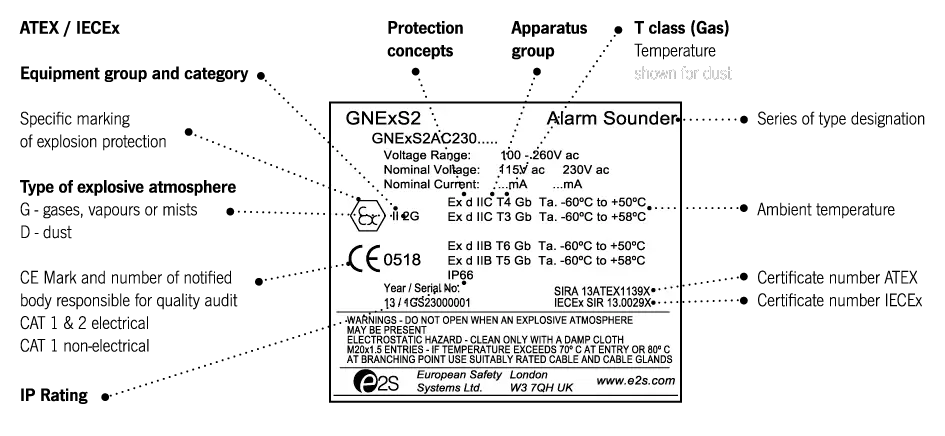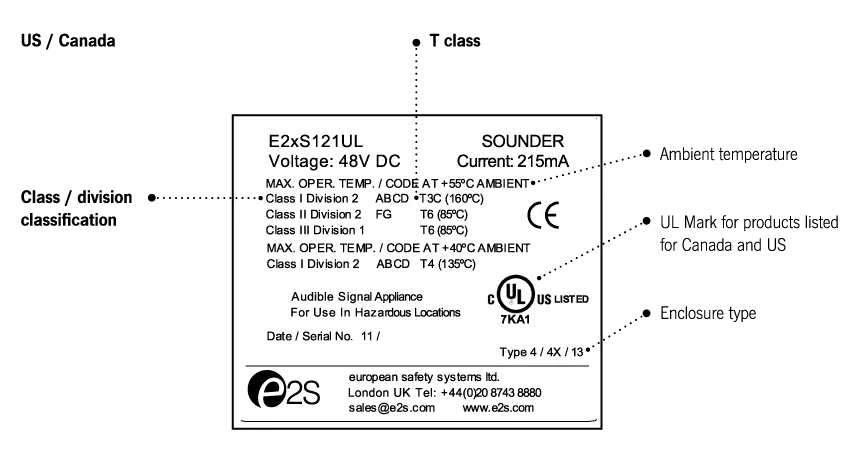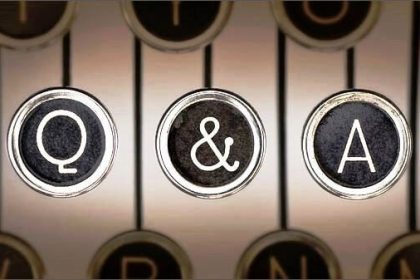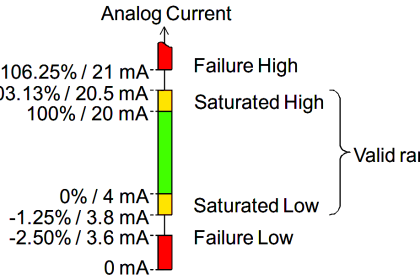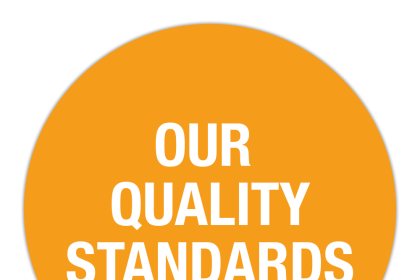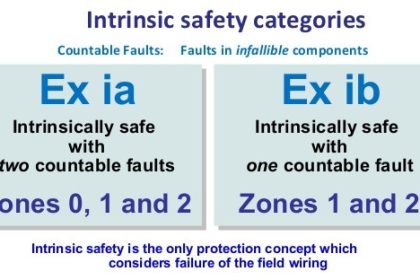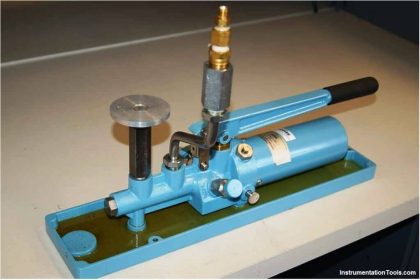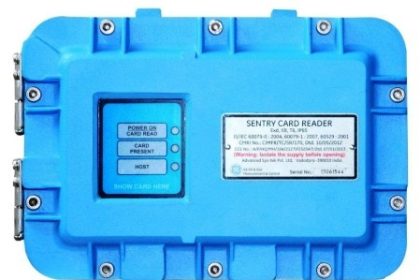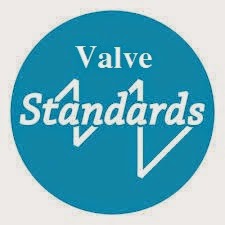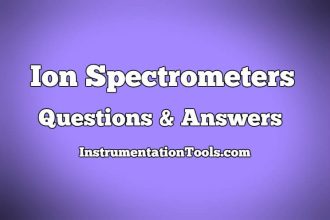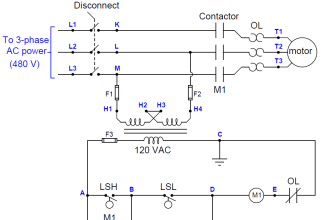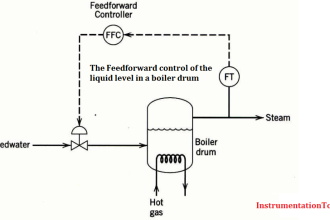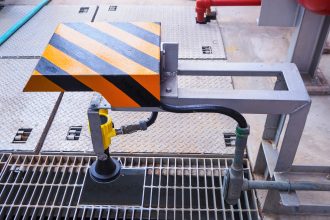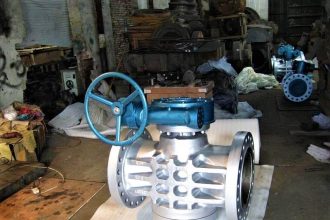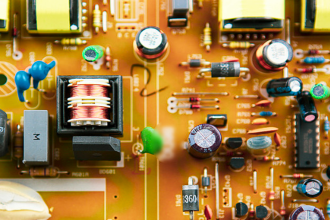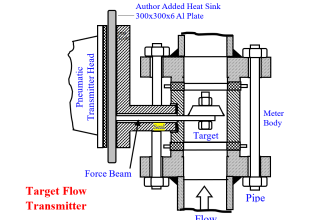Equipment intended for use in hazardous areas must be uniquely identified by the manufacturer. To comply with EN 50014 or EN 60079-0 / EN 50020 or EN 60079-11 the equipment must be labeled with the following information:
Contents
- Manufacturer name and address
- CE mark
- Designation of the series and type
- Serial number, if applicable
- Year of manufacture
- Special identification for the prevention of explosions in conjunction with the identification of the category
For the equipment group II the letter “G” (for areas in which potentially explosive gas, vapor, mist and air mixtures are present) and/or the letter “D” (for areas where dust may form potentially explosive atmospheres).
Example of an ABB Explosion Protection Classification and Identification
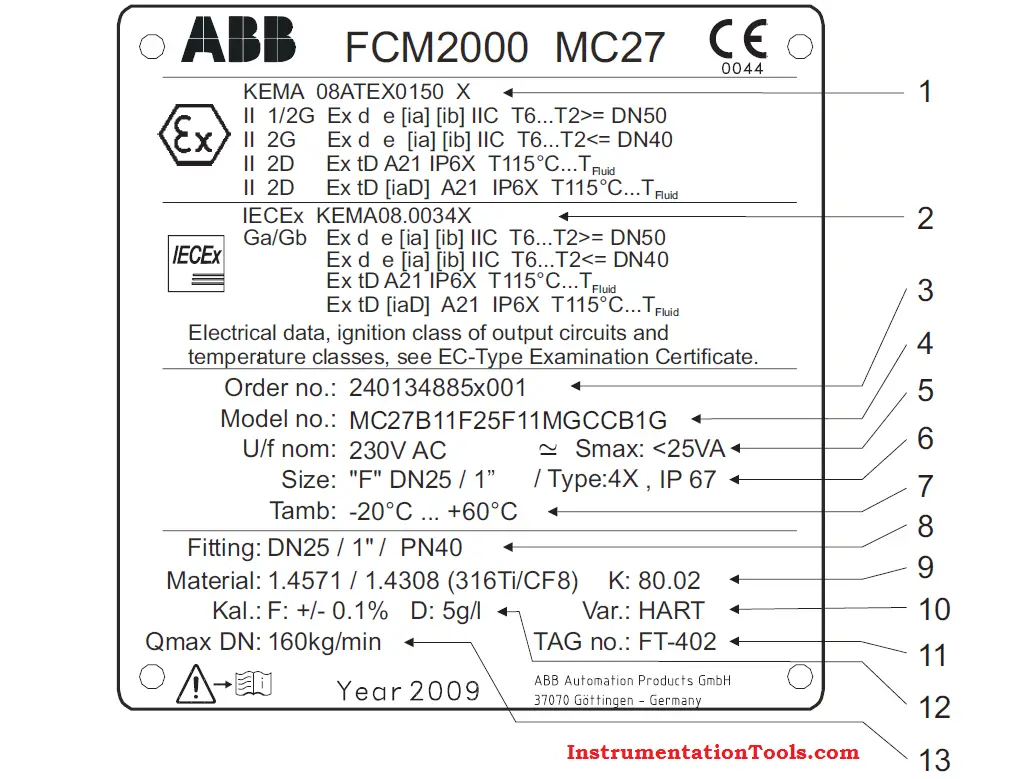
Parts Description
- ATEX approval
- IECEx approval
- Order number
- Full model number
- Power supply and maximum power consumption
- Nom. diameter and degree of protection
- Ambient temperature
- Process conn. and pressure rating
- Meas. tube material and calibr. factor
- Type of communication
- TAG number
- Calibration accuracy
- Max. flow rate
EC Type Examination Certificate KEMA 08 ATEX 0150 X
- KEMA = Approval body
- 08 = Year of approval
- ATEX = Directive 94/9 EC
- 0150 = Serial number
- X = Special conditions
Ex-Coding: II 1/2G Ex d e [ia] [ib] IIC T6 … T2
- II = Explosion group
- 1/2 = Category 1 and Category 2
- G = Gases, vapors, mists
- Ex = Identification of the degree of explosion protection
- d = Type of protection flameproof enclosure
- e = Type of protection increased safety
- ia = Type of protection intrinsic safety, 2-fault safety
- ib = Type of protection intrinsic safety, 1-fault safety
- IIC = Explosion group IIC
- T6 …T2 = Temperature class
Equipment Marking Example:
